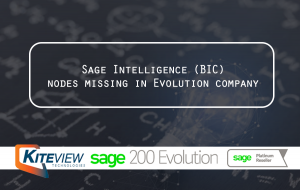Transformation. A word we hear and read about constantly, but that is because it continues to be a top-of-mind subject for so many companies, including many financial services organizations. Some firms are transforming their customer experience to meet the generational shift occurring in the market. Others are accelerating their digitalization efforts to improve their data and security needs. Whatever the driver within these organizations, the topic is also on the mind of the finance leaders within their firms as they strive to operationalize their business and deliver better business insights to their stakeholders.
A recent survey that Sage Intacct sponsored on LinkedIn highlights that while some of these initiatives were slowed due to the pandemic and market recovery, there is now some urgency to make up for some of that lost time and momentum. FSN’s Budgeting, Planning, Forecasting and Reporting 2022 survey shows that the number of companies making significant changes in their Budgeting, Forecasting and Reporting hovers around 33%, and the number of them that have completed their transformation has almost doubled from 5% to 9%.
While many of these firms are resurrecting their transformation projects, the research found that 75% of firms are not able to take on a transformation unless it takes under three months. Which begs the question of whether it is even feasible? With such a compressed timeframe for a project of this nature, it is essential for firms to make smart decisions on which piece of the technology puzzle to address first.
Firms that are focused on growth and want to make more informed decisions that drive their business could feasibly make that transformation timeline happen. The key is to begin with the end in mind. Transitioning from one system to another requires an understanding of all your current processes and tools, and how they will adapt to the new platform. If one of your workflows is broken, it’s important to identify what the process currently looks like, understand what is needed to align with the new solution and endeavour to make that transition seamless and efficient.
One Sage Intacct client looked to replace their legacy system in an effort to automate some of their manual processes and build an integrated approach with their claims management system. By keeping the “end in mind” they were able to migrate quickly and efficiently and create key integrations with other business applications. Through this transformation, they are now thinking more strategically and have enhanced their overall customer experience which is ultimately driving a competitive advantage for their business.
Another client has a financially complex business model in the real estate industry. They migrated to Sage Intacct in a rapid manner from an entry-level system and spreadsheet environment to better meet reporting and planning needs as they grew their customer base and entered new markets. Leveraging these new capabilities has reduced their monthly close from eight days to just five. They also automated their budgeting and planning processes given the difficulty and time constraints working with spreadsheets and have gained breakthroughs in forecasting and scenario planning.
Having a clear picture of your business’s financial situation can help you adapt to a rapidly changing environment. Focusing on a transformation in the short-term can pay off in the long-term with improved visibility and understanding of critical financial issues, not to mention reduced risk due to manual errors.
Isn’t it time to say farewell to spreadsheet headaches and manual procedures and say hello to transformation?








